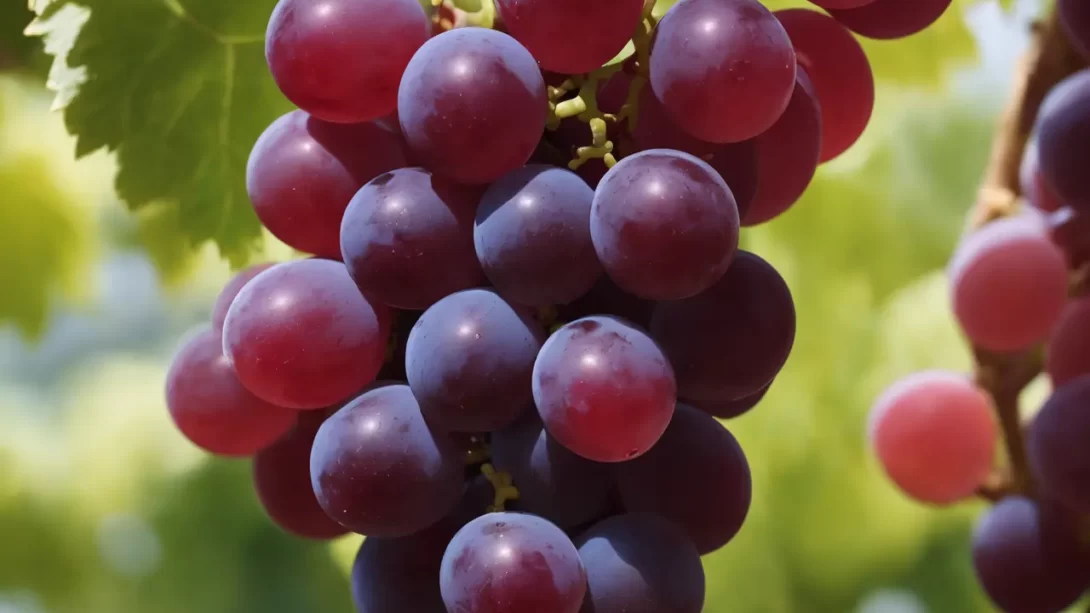Grapes are a widely enjoyed fruit, known for their juicy sweetness and versatility. Beyond their flavor, grapes are also valued for their nutritional benefits. An essential nutrient often discussed in the context of healthy eating is iron, a vital component of a balanced diet. This article aims to delve into the iron content in grapes, offering insights into how this popular fruit fits into an iron-rich diet.
Iron in Nutrition
Iron plays a crucial role in various bodily functions, most notably in the formation of hemoglobin, which is essential for transporting oxygen in the blood. Iron deficiencies can lead to health issues like anemia, characterized by fatigue and weakened immunity. The recommended daily intake of iron varies: adult men typically need about 8 mg per day, while women, especially those of childbearing age, require around 18 mg due to menstruation. There are two types of dietary iron: heme iron, found in animal products, and non-heme iron, found in plant-based foods. Non-heme iron, while crucial, is generally not absorbed by the body as efficiently as heme iron.
Nutritional Profile of Grapes
Grapes, whether red, green, or black, offer a range of nutrients. They are a good source of vitamins, especially vitamin C, vitamin K, and certain B vitamins. Grapes also contain a variety of minerals, including potassium and small amounts of calcium and magnesium. The focus here is on the iron content in grapes. While grapes are not typically considered a high-iron food, they do contribute a small amount to the daily iron intake. The specific iron content can vary depending on the grape variety and growing conditions. Understanding the nutritional profile of grapes, including their iron content, is essential for assessing their role in a diet aimed at fulfilling daily nutritional needs.
Iron Content in Grapes
When examining the iron content in grapes, it’s important to set realistic expectations. Grapes contain a modest amount of iron; for instance, a cup of raw grapes typically provides about 0.5 mg of iron. This amount is relatively small, especially when compared to high-iron foods like red meat, spinach, or lentils. However, it’s worth noting that even small contributions from fruits like grapes can add up to help meet daily iron requirements. The iron content can slightly vary between different grape varieties and is also influenced by factors such as the soil quality in which the grapes are grown.
Enhancing Iron Absorption from Grapes
The iron in grapes is non-heme iron, which is not absorbed as efficiently as the heme iron found in animal products. However, there are ways to enhance the absorption of non-heme iron. One effective method is to consume vitamin C-rich foods along with non-heme iron sources. Vitamin C significantly boosts iron absorption, making it a valuable addition to meals containing iron-rich plant foods. For example, pairing grapes with a citrus fruit or a glass of orange juice can increase the amount of iron your body absorbs from the grapes. This approach can be particularly beneficial for vegetarians and vegans who rely heavily on non-heme iron sources.
Other Health Benefits of Grapes
Apart from their iron content, grapes offer several other nutritional benefits. They are rich in antioxidants, including resveratrol, which is found in the skins of red and purple grapes. Resveratrol has been linked to various health benefits, such as reduced risk of heart disease and certain cancers. Grapes are also a good source of dietary fiber, which is beneficial for digestive health. Additionally, they contain compounds that have been studied for their anti-inflammatory and cholesterol-lowering properties. These multiple health benefits make grapes a valuable addition to a balanced diet, contributing to overall health and well-being.
The Role of Grapes in an Iron-Rich Diet
While grapes alone are not a significant source of iron, they can play a supportive role in an iron-rich diet. Incorporating a variety of iron-rich foods, both from animal and plant sources, is key to meeting daily iron requirements. Grapes can complement these foods both nutritionally and in terms of flavor. For instance, adding grapes to a salad with spinach and nuts, or as a side to iron-rich meat dishes, can enhance the overall iron intake while also providing a burst of natural sweetness.
Dietary Strategies for Optimal Iron Absorption
To maximize the benefits of the iron present in grapes and other plant-based foods, it’s important to understand and implement dietary strategies that promote iron absorption. Consuming foods rich in vitamin C alongside iron sources is a well-known strategy. Additionally, avoiding certain substances that can inhibit iron absorption, such as tannins in tea and coffee or calcium in dairy products, during iron-rich meals can also be beneficial. Instead, these can be consumed at different times of the day to ensure optimal iron absorption from meals.
Conclusion
Grapes, with their modest iron content, contribute to the overall diversity and nutritional balance of a healthy diet. They should be viewed as part of a larger dietary pattern that includes a variety of iron sources. Understanding how to effectively combine foods for optimal iron absorption is key to making the most of the nutrients available in every meal. By incorporating grapes along with other nutrient-rich foods, individuals can enjoy not only the delightful flavors but also the comprehensive health benefits that come from a diverse and balanced diet. Remember, a well-rounded diet is the cornerstone of good health, and grapes, with their array of beneficial nutrients, definitely have a place in it.



